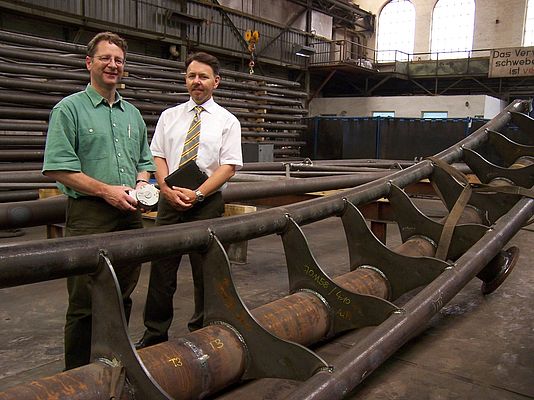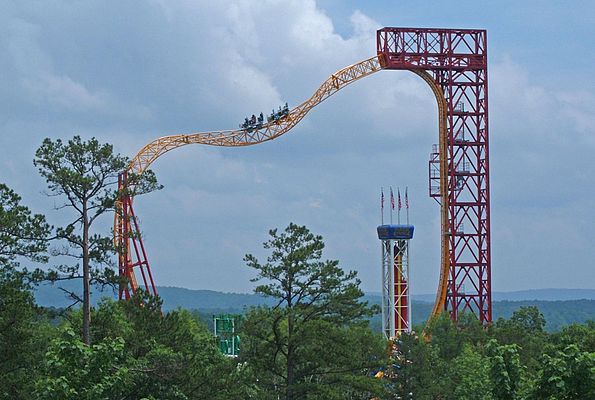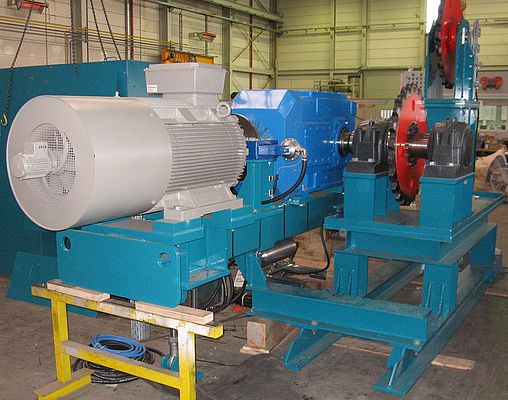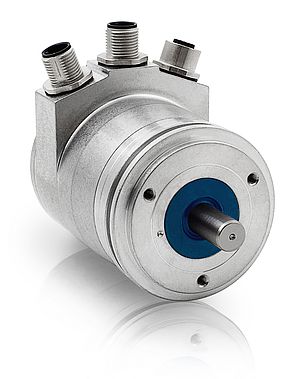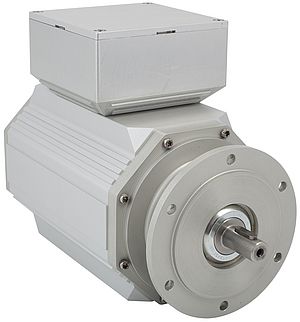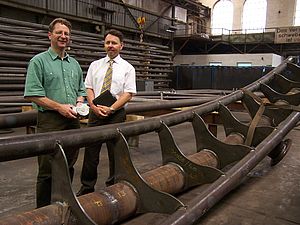While the chain-driven elevator is lifting the carriages of the rollercoaster to a height of 46.2 metres at a high speed, a incremental encoder senses the rotational speed of the asynchronous driving motor.
The biggest German manufacturer of roller-coasters Maurer Söhne, located in the centre of Munich, has been building customised fairground rides for amusement parks all over the world since 1992. Acceleration, speed and special surprise effects make every coaster-ride an exciting experience for families or adventurous young people. In the "SkyLoop" roller-coaster featuring the highest inverse ride worldwide, the passengers are even pulled upward in the vertical position. While the chain-driven elevator is lifting the fully charged carriages with 12 persons to a height of 46.2 metres at a high speed, a series 861 incremental encoder from Leine & Linde senses the rotational speed of the 300kW asynchronous driving motor from Siemens according to its preset acceleration and speed profile.
The use of frequency inverters and encoders for the control of three-phase motors has drastically increased over the last years. The inverters are not only characterised by low operating costs and high performance, but they also help to save energy.
Start in the chain-driven lift
The vertical chain-driven lift takes 2 fully loaded carriages with 12 persons in total from the station to a height of 46.2 metres within about 20 seconds, thereby reaching speeds of up to 3.5 m/s. The heart of the driving station is an asynchronous 300kW three-phase motor from Siemens, on the shaft-end of which an incremental encoder of the series 861 from the Swedish manufacturer Leine & Linde is mounted. The encoder located under the ventilator cowl provides the required highly accurate control behaviour and highest reliability. The observance of the preset speeds is very important for the installation, as the layout and the capacity rating are significantly determined by the lifting speed.
After both coupled carriages have left the lift upside down, they drive through a 360° screw and then dash down the roller-coaster rails. The passengers race through the station at a speed of more than 100 km/h, and then speed upward the vertical lift section again, until the vehicles have lost their speed. Thereby, the passengers experience weightlessness. As soon as the train has finished two alternate movements, it is caught in the vertical position by special brakes. Now, the accurate control behaviour of the lifting drive is required, which must lift the heavy 5.5 ton train from a standing start before taking the passengers quickly and safely back to the station. On the ten roller-coasters installed so far, there hasn't been a single failure of the drive.
The manufacturing of a roller-coaster installation takes 3 to 4 months, and the erection on the site takes just as long. Nearly all roller-coasters are sold outside Germany, especially in the USA, Europe and China. This year, the Munich structural-steel specialists have already delivered five new roller-coasters to their customers, four more installations will follow by the end of 2011, including the first installation in Australia.
Highest safety requirements
The manufacturing of the rails bent in a complex manner requires both highest quality of the weld seam and absolute dimensional accuracy. For this purpose, Maurer Söhne uses a self-developed software and highly accurate measurement technologies, which cover the whole process from the layout to the final dimensional inspection.
The roller-coasters are checked and acceptance-inspected according to international standards. Thereby, the installations also undergo a risk analysis and, already today, the safety functions of the controller are classified and determined in different levels of Safety Integrity (SIL) or Performance Level (PL). The application of the new safety directives is definitively binding all over Europe as of 2012. With the integration of Leine & Linde encoders in a corresponding safety circuit, the user can realise applications up to SIL 3 or at least up to PL d.
Incremental encoders
The series 861 encoders are characterised by a robust aluminium housing sealed to IP66, which even meets the high requirements of the heavy industry. They have 6 or 3 short-circuit proof outputs and an electrically isolated hollow shaft with a diameter of 12 or 16 mm. The encoders are designed for a supply voltage of 5V or 9-30 V and are available with the Advanced Diagnostic System ADS.
The number of lines per revolution can be chosen in fine steps from 500 to 10,000 or realised as specified by the customer. The number of measuring steps corresponds to 4 times the number of lines and can reach a maximum of 40,000 measuring steps per revolution. The operating temperature ranges from -20 to 80°C. The specified resistance to vibration is 10g and the shock resistance is 100g. The different climatic zones, in which the roller-coasters are erected, lead to totally unproblematic operating temperatures from 0 to 40°C.



